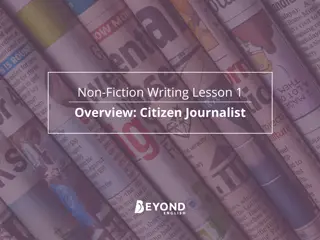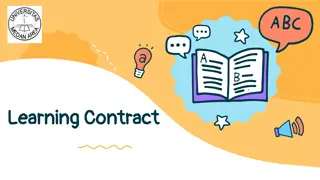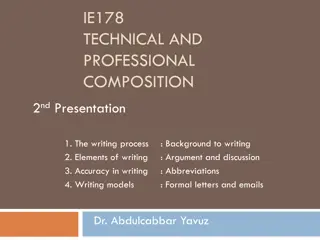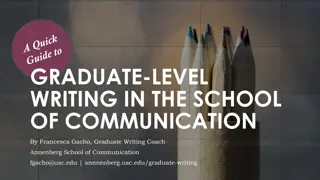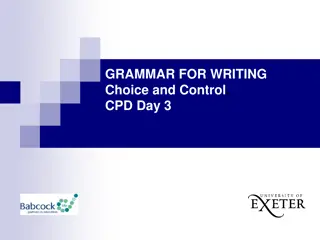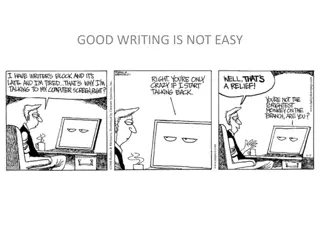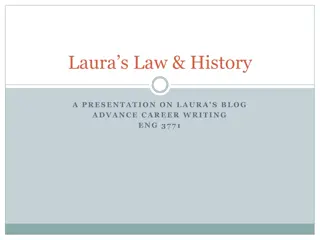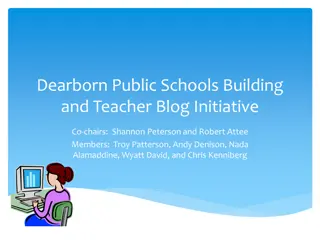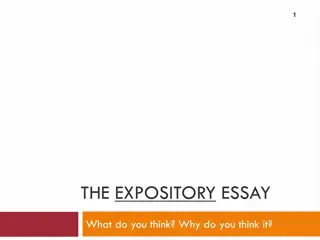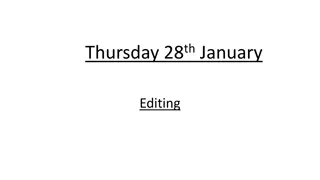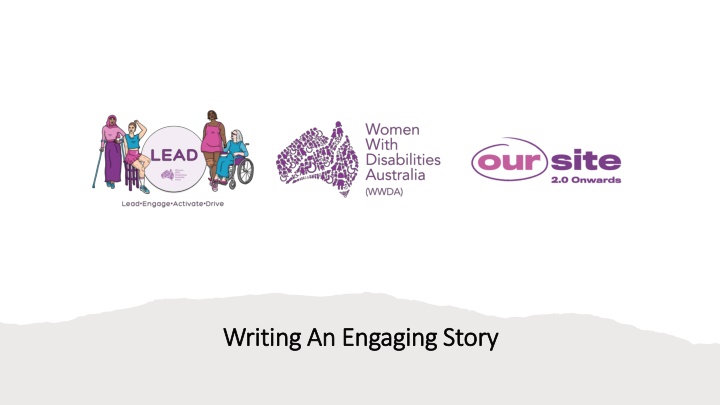
Crafting an Engaging Story: Tips for Creating Impactful Narratives
Learn how to write an engaging story that resonates with your audience by choosing a relatable topic, finding your authentic voice, and structuring your narrative effectively. Discover how to captivate readers from the introduction to the conclusion, leaving them with a lasting emotional response.
Download Presentation

Please find below an Image/Link to download the presentation.
The content on the website is provided AS IS for your information and personal use only. It may not be sold, licensed, or shared on other websites without obtaining consent from the author. If you encounter any issues during the download, it is possible that the publisher has removed the file from their server.
You are allowed to download the files provided on this website for personal or commercial use, subject to the condition that they are used lawfully. All files are the property of their respective owners.
The content on the website is provided AS IS for your information and personal use only. It may not be sold, licensed, or shared on other websites without obtaining consent from the author.
E N D
Presentation Transcript
Writing An Engaging Story Writing An Engaging Story
Choosing a Topic Something our community can relate to and that will leave the reader with an emotional response. E.g., Do you want your reader to resonate with your daily experiences of issues you face as a disabled woman, girl, or gender diverse person? To feel inspired by somebody else s leadership journey? To feel empowered to seek workplace accommodations? Something you feel confident in sharing, on a topic you know that you can speak to and is your story to tell.
Tone and Voice We want to hear your story, your opinions, your analysis be you, not somebody else! Tip: If it is accessible to you, reading your writing out loud can help you figure out if you re staying true to your voice. Does it sound how you d normally speak? Try using a text-to-speech software like NaturalReader to help.
Structure Intro Hook people! Start with a strong sentence that poses a problem or a question. Body Explore your issue. To stay on topic, it can be helpful to always ask how your body paragraphs are responding to the problem/question you posed in the intro. Conclusion The takeaway. What do you want people to be feeling? Is there action you want them to take? Tip: Try drafting your structure before you start writing. Making a dot-point list of the important things you want to communicate can help you arrange your ideas into a flow that works well.
For example: Introduction Begin by telling your audience what topic you might be writing about. I began writing children s books featuring characters with disability and illness after living with my own chronic illnesses. Body How did you get here? What inspired you to speak about this topic? My journey thus far has taught me that to support other people, I must first love myself and must appreciate that the journey I have been on has been hard but can be used to make another person s life just a little easier. Conclusion Leave the reader feeling like they can empathise with your story or experience. Apart from being a children s author with chronic illness, I am the founder of Forevability. Alongside my fabulous co- founder, Amy, I use Forevability as a platform to begin making small changes. On the surface, it is a collection of resources relating to disability, illness, diversity and inclusion; it is a place where those who want to learn, and those who need support can come and find information, authors and other resources when they need it. It is a network of amazing, creative people who gladly and passionately share their own experiences. Excerpts from Tabitha Page s blog Empowering others to love themselves Tip: Try drafting your structure before you start writing. Making a dot-point list of the important things you want to communicate can help you arrange your ideas into a flow that works well.
Getting Creative! Do you want to incorporate a poem? Publish a collage? Use whatever form feels most accessible. Play to the audience s senses. One of our great strengths as disabled and neurodivergent people is our relationship to the sensory world. E.g., The air is stuffy in that room, and I feel like I could suffocate, so I try to inhale deeply. All I cop is a nostril full of the previous person s body odour and I feel the vomit rising again - Tabitha Lean, The Waiting Room and Hep C Art by Tabitha Lean accompanying The Waiting Room and Hep C, published on the WWDA Blog.
A Note on Writing A Note on Writing Trauma Trauma
The Submission Process Pitching and confirming the topic/angle of your blog post. Writing and submitting a first draft through our blog or story submission form. Someone on the WWDA team will then provide you with a copy-edit of your draft. Making any suggested changes/edits, approving final piece for publication. Finalising title, accompanying image, author name, author bio, and social media handles you would like tagged alongside the piece. Signing WWDA s Publication of Creative Work consent form. Arranging payment ($100).
Thank you! Thank you to Hasib Hourani and his Left to Write workshop series, which informed the development of this presentation. Pitch to: oursite@wwda.org.au

